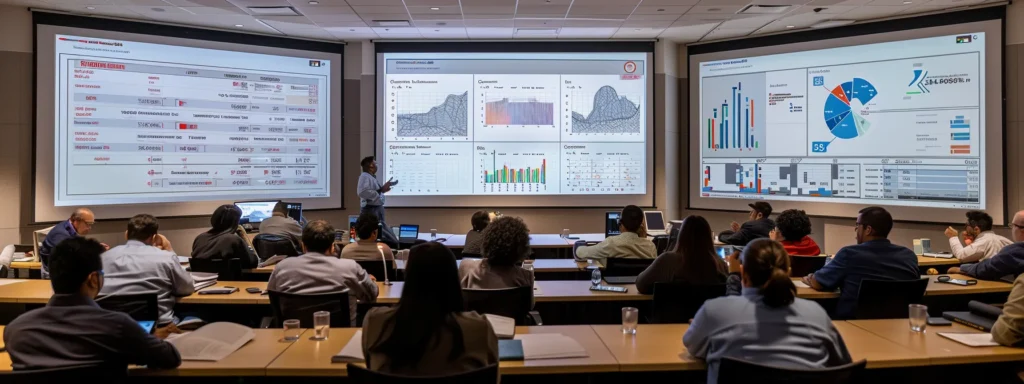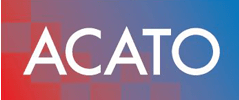
Comparing ISO 9001 Certifications: Key Insights and Differences
Understanding the nuances of ISO 9001 certifications is crucial for organizations aiming to improve their quality management strategies. A key statistic shows that over 1 million companies worldwide hold ISO 9001 certification, underscoring its relevance across industries such as construction. This article will delve into the certification process, evaluate the differences between various ISO 9001 certifications, and assess their benefits. By addressing common pain points, such as selecting the right certification to align with the PDCAprinciple, readers will gain valuable insights to enhance their operational effectiveness.
Defining ISO 9001 Certifications and Their Relevance

ISO 9001 certifications serve as a framework for standardization, enabling organizations to enhance customer satisfaction through consistent quality management practices. This certification is essential across various industries, from manufacturing to healthcare, bolstering their philosophy of continuous improvement. Furthermore, ISO certified organizations enjoy global acceptance, making compliance a vital asset in today’s competitive marketplace.
Clarifying the Purpose of ISO 9001 Standards
The purpose of ISO 9001 standards revolves around enhancing customer satisfaction through effective quality management systems. By adhering to these guidelines, organizations can establish consistent processes that lead to improved efficiency in their operations. This focus on total quality management not only meets customer expectations but also fosters customer loyalty, thus driving business growth.
Moreover, ISO 9001 certification serves as a critical differentiator in competitive markets, signaling to clients and stakeholders a commitment to quality. Organizations that implement these standards can streamline their processes and reduce waste, ultimately saving time and resources. This systematic approach equips businesses to adapt to changes in the market while maintaining high quality in their products and services.
Identifying Industries That Benefit From ISO 9001 Certifications
ISO 9001 certifications are valuable across a range of sectors, including manufacturing, healthcare, and information technology. Organizations in these industries leverage the criteria set by ISO 9001 to implement process improvement strategies that enhance operational efficiency. For instance, a manufacturing firm may utilize quality management audits to identify inefficiencies in their production line, improving their overall product quality and customer satisfaction.
Moreover, service-oriented industries, such as retail and hospitality, can significantly benefit from ISO 9001 certifications. These organizations often face the challenge of maintaining consistent service levels. By adopting ISO 9001 standards, they can develop structured processes that ensure staff adherence to quality practices, ultimately leading to better performance and repeat business. This commitment to quality not only satisfies clients but also supports an organization’s reputation in competitive markets.
Recognizing the Global Acceptance of ISO 9001
The global acceptance of ISO 9001 certifications reflects their value across industries, stemming from their documented benefits in quality management and efficiency. Organizations that achieve this certification can present a strong hypothesis about their commitment to high standards, which is often highlighted in relevant literature. By integrating these standards, businesses can effectively minimize waste and enhance operational processes, gaining a competitive edge in their respective markets.
This acceptance is evident as companies across various sectors adopt ISO 9001 to improve not only their quality management systems but also their environmental management systems. A firm focusing on sustainability can leverage these certifications as an abstract representation of their dedication to quality while addressing environmental concerns. This alignment helps organizations meet client expectations and maintain a solid reputation in a competitive environment.
Analyzing the Key Components of ISO 9001 Certifications

The analysis of ISO 9001 certifications encompasses crucial aspects that underpin effective quality management. The structure of the ISO 9001 framework provides a solid foundation for implementing robust project management practices. Core principles of quality management systems emphasize customer satisfaction and continuous improvement, while detailed documentation requirements outline the process necessary for certification. Understanding these components is vital for organizations seeking to enhance their quality management systems.
Understanding the Structure of ISO 9001 Framework
The structure of the ISO 9001 framework is designed to create a comprehensive quality management system (QMS) that promotes efficiency and customer satisfaction. It incorporates key policies such as the environmental policy, which ensures organizations are mindful of their ecological impact while achieving quality control. Each dimension of the framework supports a holistic approach, enabling businesses to systematically address quality objectives and foster continuous improvement.
A practical understanding of the ISO 9001 framework reveals its emphasis on clear documentation and process consistency. Organizations that implement this framework can effectively align their operational goals with quality management practices, resulting in enhanced performance and accountability. By focusing on structured policies and robust quality control measures, businesses not only meet client expectations but also strengthen their competitive edge in the marketplace.
Highlighting Core Principles of Quality Management Systems
The core principles of quality management systems, as established in ISO 9001, emphasize a structured approach that promotes sustainable development and operational efficiency. Organizations benefit from an effective infrastructure that supports quality objectives, ensuring all departments work in synergy. This alignment enables companies to maintain high response rates to customer needs, ultimately improving satisfaction and loyalty.
Understanding the correlation between these principles and overall business performance is essential for organizations seeking certification. By integrating a focus on customer-centric practices within their quality strategies, businesses are better equipped to address market challenges. This holistic approach not only strengthens quality management systems but also contributes significantly to achieving long-term organizational goals.
Detailing the Documentation Requirements for Certification
Documenting the requirements for ISO 9001 certification involves creating a structured approach to quality management systems that organizations must adopt. Key documentation includes a quality manual that outlines the organization’s quality policies and objectives, as well as a variety of procedures that address areas such as process control and continuous improvement. Organizations often conduct a literature review to identify best practices that inform their documentation process, ensuring compliance and fostering a culture of excellence.
Additionally, clear records must be maintained to demonstrate adherence to these established procedures, which helps in assessing variance and operational efficiency. Documenting training records, audit results, and corrective actions provides evidence of the organization’s commitment to quality and continuous improvement. By focusing on these documentation requirements, organizations can effectively streamline their quality management systems and enhance overall performance in a competitive landscape.
Evaluating the Differences Between Various ISO 9001 Certifications

This section focuses on distinguishing between different versions of ISO 9001 standards, emphasizing how each iteration impacts quality management practices. It also explores the credibility of certification bodies, highlighting the importance of selecting reputable organizations. Additionally, the comparison of certification processes across organizations sheds light on variations in approaches, showcasing how sustainability and innovation play vital roles in achieving effective outcomes.
Distinguishing Between Different Versions of ISO 9001 Standards
The distinction between various versions of the ISO 9001 standards reflects advancements in quality management principles and their application in systems engineering. Each iteration introduces enhancements that focus on specific areas such as measurement and data collection, ensuring organizations can analyze performance effectively against established benchmarks. The latest version emphasizes a more integrated approach to quality management, fostering better alignment within supply chain processes and enhancing overall operational efficiency.
Organizations that pursue certification under different versions of ISO 9001 can benefit from understanding these distinctions. For example, the latest standards encourage a robust analysis of variance in operational processes, which aids in identifying opportunities for improvement and innovation. This information is invaluable, as it supports organizations in creating tailored solutions that address their unique challenges, ultimately leading to long-term success in competitive markets.
Exploring Certification Bodies and Their Credibility
In the realm of ISO 9001 certifications, understanding the role of certification bodies is critical for organizations considering this important credential. The reliability of these bodies hinges on their adherence to recognized methodologies, ensuring that the certification process is transparent and robust. By comparing different certification bodies, businesses can identify those that align with their quality management goals and offer credible validation of their systems.
Many organizations seek open access to information regarding certification bodies to gauge their credibility effectively. This access allows for informed decisions based on the body’s track record and recognition within the industry. Understanding these factors can significantly impact how organizations position themselves in the market, ultimately contributing to their success in achieving and maintaining ISO 9001 certification.
Comparing Certification Processes Across Organizations
Organizations pursuing ISO 9001 certification must navigate various processes that can vary significantly across different sectors, including manufacturing and service industries. This evaluation often begins with a detailed questionnaire that assesses current quality management practices against ISO standards. By understanding the specific requirements of the International Organization for Standardization, businesses can tailor their approach to ensure compliance and improve their overall quality management systems.
The certification process also highlights the importance of clear documentation and consistent evaluation among organizations. For example, a manufacturing firm may conduct internal audits to identify gaps in their quality management practices, whereas service-oriented businesses might focus on customer feedback mechanisms. Such practical steps not only streamline operations but also enhance an organization‘s ability to meet the compliance standards outlined in ISO 9001, ultimately driving better quality outcomes and customer satisfaction.
Explaining the Certification Process for ISO 9001

The certification process for ISO 9001 involves several key steps that organizations must follow to achieve compliance and gain a competitive advantage. This section outlines these steps, emphasizing the significance of leadership commitment and the role of internal audits in enhancing productivity and identifying areas for improvement. Additionally, common challenges faced during the certification journey will be addressed, providing practical insights for successful navigation of the process.
Outlining Steps Involved in Achieving ISO 9001 Certification
Achievements in ISO 9001 certification begin with a comprehensive evaluation of existing quality management processes. Organizations must first conduct a gap analysis to identify discrepancies between current practices and ISO standards. This foundational step prepares the ground for effective alignment with certification requirements, ensuring that organizations can streamline their operations and enhance customer satisfaction.
Following the assessment, the next step involves developing a quality management system that aligns with ISO 9001 principles. Organizations often establish clear procedures and allocate responsibilities to facilitate compliance. By committing to systematic internal audits, management ensures ongoing adherence to quality standards, identifies areas of improvement, and ultimately drives progress toward certification. This structured approach equips organizations with the tools needed to maintain high quality in their products and services.
Discussing the Role of Internal Audits in the Certification Journey
Internal audits play a vital role in the ISO 9001 certification journey by ensuring that quality management systems are effectively implemented and maintained. These audits allow organizations to assess their compliance with ISO standards, identify areas for improvement, and validate that processes align with established quality objectives. By conducting regular internal audits, businesses can reinforce a culture of continuous improvement, thereby increasing efficiency and effectiveness in operations.
Through the lens of practical experience, organizations that prioritize internal audits often observe significant enhancements in their quality management practices. For instance, an internal audit may reveal inconsistencies in documentation or operational procedures, enabling the organization to address these issues proactively. This timely intervention not only aids in maintaining compliance but also fosters greater employee engagement and accountability, ultimately contributing to a higher standard of quality in products and services.
Addressing Common Challenges During the Certification Process
Organizations often encounter several challenges during the ISO 9001 certification process, particularly when it comes to aligning existing practices with the established standards. Many businesses struggle with inadequate documentation, which can hinder their ability to demonstrate compliance. By implementing a structured approach to quality management documentation, including clear procedures and guidelines, organizations can alleviate these issues, facilitating a smoother certification journey.
Another common challenge involves gaining leadership buy-in and fostering a culture centered around quality management. Without active support from top management, initiatives aimed at achieving ISO certification may lack direction and motivation. To address this, organizations can conduct training sessions that highlight the benefits of ISO 9001, ensuring that all employees understand the importance of their role in maintaining quality standards. This proactive engagement helps create a united front, enabling organizations to navigate certification challenges more effectively.
Assessing the Benefits of ISO 9001 Certifications

ISO 9001 certifications provide significant advantages for organizations by measuring improvements in operational efficiency, evaluating customer satisfaction and trust, and exploring market advantages gained through certification. Each of these aspects contributes to a comprehensive understanding of how ISO 9001 can bolster an organization’s quality management practices, ultimately fostering growth and enhancing competitive positioning. For further details, consider a ISO 9001 certification consultation.
Measuring Improvements in Organizational Efficiency
Measuring improvements in organizational efficiency through ISO 9001 certifications involves evaluating key performance indicators that reflect operational effectiveness. For instance, businesses often track metrics such as production output, defect rates, and customer complaint resolutions before and after implementing ISO standards. This continuous monitoring allows companies to identify significant enhancements in their processes, which can lead to reduced waste and optimized resource allocation.
Organizations that achieve ISO 9001 certification frequently report increased operational efficiency owing to well-documented processes and systematic problem-solving approaches. By adopting quality management principles, they can standardize operations, streamline workflows, and empower employees with defined roles. Such improvements not only enhance productivity but also create a foundation for sustained growth and competitiveness in the market, directly addressing common pain points faced by businesses in diverse industries.
Evaluating Customer Satisfaction and Trust
Organizations that implement ISO 9001 certification often experience enhanced customer satisfaction and trust as they establish consistent quality management practices. These practices help in identifying and addressing customer needs more effectively, leading to improved service delivery and product quality. For example, a company that regularly assesses customer feedback can make informed adjustments to its offerings, thereby fostering a positive relationship with clients and encouraging repeat business.
Moreover, achieving ISO 9001 certification signals a strong commitment to quality, which instills confidence in customers. This credibility can differentiate a business in a crowded market, as potential clients often prioritize partnerships with certified organizations. By adhering to ISO 9001 standards, companies not only enhance their operational processes but also demonstrate their dedication to maintaining high-quality interactions, ultimately boosting trust and loyalty among customers.
Exploring Market Advantage Gained Through Certification
Achieving ISO 9001 certification can significantly enhance an organization‘s market position by demonstrating a commitment to quality management and operational excellence. Companies with this certification often stand out in competitive landscapes, as it signals to potential clients and partners that they adhere to international quality standards. This enhanced credibility can open doors to new business opportunities, particularly in industries where quality is paramount, such as manufacturing and healthcare.
Moreover, organizations that hold ISO 9001 certification frequently benefit from increased customer trust and loyalty. By showcasing rigorous compliance with quality management principles, these companies reassure clients about their dedication to delivering high-quality products and services. This advantage not only attracts new customers but also fosters long-term relationships with existing ones, leading to sustained business growth and a stronger market presence.
Highlighting Future Trends in ISO 9001 Certifications

The future of ISO 9001 certifications is shaped by evolving quality management standards, technological innovations, and an increasing emphasis on sustainability. Anticipating these changes will enable organizations to better align their practices with emerging expectations. Examining the role of technology and the growing demand for sustainable practices will provide critical insights into how ISO standards will adapt, ensuring long-term relevance and effectiveness.
Anticipating Changes in Quality Management Standards
The landscape of quality management standards is set to evolve as organizations increasingly prioritize alignment with customer expectations and regulatory requirements. One anticipated change is the integration of advanced technologies, such as artificial intelligence and data analytics, into ISO 9001 practices. These innovations have the potential to enhance decision-making processes and streamline quality management systems, providing organizations with tools to identify areas for improvement more effectively.
Additionally, there is a growing emphasis on sustainability within quality management standards, reflecting market demands for responsible practices. As businesses strive to meet environmental commitments, ISO 9001 certification processes may increasingly incorporate sustainability criteria. This shift not only addresses client expectations but also positions organizations favorably in a competitive market where eco-friendly practices are becoming essential for long-term success.
Analyzing Technological Innovations Impacting Certifications
Technological innovations are reshaping ISO 9001 certifications, enabling organizations to leverage tools such as artificial intelligence and data analytics for enhanced quality management. These advancements facilitate real-time data collection and analysis, allowing businesses to identify areas for improvement swiftly and make informed decisions. By adopting such technologies, organizations can streamline their processes, reduce errors, and ensure compliance with ISO standards more effectively.
As connected systems become increasingly prevalent, organizations can also automate documentation processes required for ISO 9001 compliance. This automation minimizes the risk of human error, enhancing the accuracy of records essential for audits and assessments. Ultimately, integrating technology into quality management practices not only aids in achieving ISO 9001 certification but also positions organizations competitively in the marketplace, as they respond efficiently to evolving quality standards and customer expectations.
Discussing Increasing Demand for Sustainability in ISO Standards
The increasing demand for sustainability in ISO standards underscores a significant shift in how organizations approach quality management. Companies are becoming more aware that integrating sustainable practices not only meets regulatory requirements but also aligns with consumer expectations. For instance, businesses that incorporate sustainable methodologies can enhance their ISO 9001 compliance while demonstrating a commitment to environmental responsibility, ultimately strengthening their market position.
As sustainability becomes a central focus, ISO standards are likely to evolve to include criteria that emphasize environmental impact alongside quality management principles. This integration allows organizations to streamline their efforts and tackle sustainability challenges alongside established quality goals. By adopting such a holistic approach, companies not only improve their operational processes but also enhance their reputation, making them more attractive to environmentally-conscious customers and stakeholders. For more insights, consider exploring the advantages integrated management systems.
Understanding the Benefits and Importance of ISO 9001 Certification
Comparing ISO 9001 certifications reveals essential insights that highlight the nuances between different versions and their impact on quality management practices. Organizations must understand these distinctions to effectively align their operations with the latest standards and maximize their competitive edge. Additionally, choosing credible certification bodies ensures the legitimacy of the certification process, fostering trust among clients and stakeholders. Ultimately, a thorough comparison of ISO 9001 certifications equips businesses with the knowledge necessary to enhance their quality management systems and drive sustainable success.

